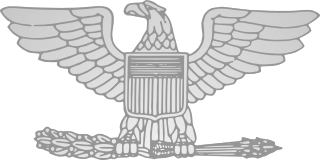
James Harrison Wilson was a United States Army topographic engineer and a Union Army Major General in the American Civil War. He served as an aide to Maj. Gen. George B. McClellan during the Maryland Campaign before joining Maj. Gen. Ulysses S. Grant's army in the Western Theater, where he was promoted to brigadier general. In 1864, he transferred from engineering to the cavalry, where he displayed notable leadership in many engagements of the Overland Campaign, though his attempt to destroy Lee’s supply lines failed when he was routed by a much smaller force of Confederate irregulars.

Gordon Granger was a career U.S. Army officer and a Union general during the American Civil War. He distinguished himself at the Battle of Chickamauga.
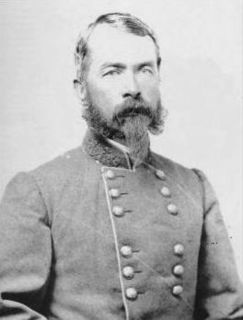
General Samuel Jones was a major general in the Confederate States Army during the American Civil War. At the midpoint of the war, he commanded the Department of Western Virginia, defending the Virginia and Tennessee Railroad and the vital salt mines. Later he commanded the district of South Carolina.
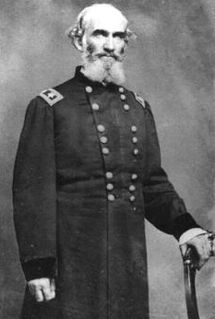
Andrew Jackson Smith was a United States Army general during the American Civil War, rising to the command of a corps. He was most noted for his victory over Confederate General Stephen D. Lee at the Battle of Tupelo, Mississippi, on July 14, 1864.
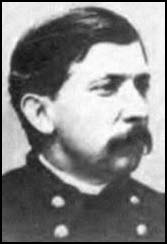
James William Forsyth was a U.S. Army officer and general. He was primarily a Union staff officer during the American Civil War and cavalry regimental commander during the Indian Wars. Forsyth is best known for having commanded the 7th Cavalry at the Wounded Knee Massacre on December 29, 1890 during which more than 150 men, women, and children of the Lakota were killed and 51 were wounded.

Alvan Cullem Gillem was a general in the Union Army during the American Civil War. Although Southern-born, he remained loyal to the Federal government and fought in several battles in the Western Theater before commanding occupation troops in Mississippi and Arkansas during Reconstruction. He later played a prominent role in the Modoc War in 1873.

Charles Camp Doolittle was a store clerk, general in the Union Army during the American Civil War, and a bank cashier.

Kenner Garrard was a brigadier general in the Union Army during the American Civil War. A member of one of Ohio's most prominent military families, he performed well at the Battle of Gettysburg, and then led a cavalry division in the army of Major General William T. Sherman during the Atlanta Campaign. He developed a reputation for personal bravery and was cited for gallantry at the Battle of Nashville as an infantry division commander.

John Thomas Croxton was an attorney, a general in the Union Army during the American Civil War, and a postbellum U.S. diplomat.
Richard W. Johnson was an officer in the Union Army during the American Civil War.
The 22nd Regiment Alabama Volunteer Infantry was an infantry regiment that served in the Confederate Army during the American Civil War.
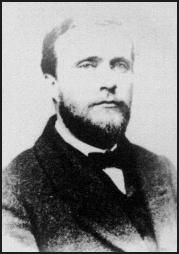
Miles Daniel McAlester was a career United States Army officer and a Union Army Major during the American Civil War. In 1867, he was nominated and confirmed for appointment to the grade of brevet brigadier general in the Regular Army, to rank from April 9, 1865.
The 3rd Kentucky Infantry Regiment was a volunteer infantry regiment that served in the Confederate States Army during the American Civil War. It was part of the First Kentucky Brigade through August 1862.
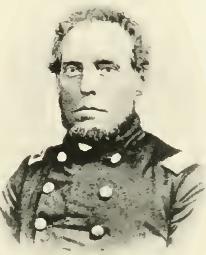
Sylvester Gardner Hill was a colonel in the Union Army during the American Civil War. He served as a brigade commander during the Red River Campaign and Battle of Nashville where he was killed in action. He received a posthumous appointment as a brevet brigadier general.
James Patton Brownlow was a Union Army officer during the American Civil War. Brownlow was the son of East Tennessee Unionist preacher, newspaper publisher and editor, Governor of Tennessee and U.S. Senator "Parson" William G. Brownlow. James P. Brownlow served in several positions in the Union Army, finishing the war as colonel of the 1st Tennessee Volunteer Cavalry Regiment (Union). He was noted for his courage and perceptiveness in battle and keen sense of military tactics. He led several daring raids and attacks. The United States Senate confirmed the award of the grade of brevet brigadier general of volunteers, to rank from March 13, 1865, to Brownlow on March 12, 1866. After the war, he was adjutant general of the State of Tennessee and then a railroad superintendent. He died in 1879 at the age of 36.

Tyree H. Bell often referred to by his full name, Tyree Harris Bell, was a Confederate States Army brigadier general, during the American Civil War.

The 9th Arkansas Infantry was a Confederate Army infantry regiment during the American Civil War. It served throughout the war in the western theater, seeing action in the Vicksburg, Tennessee and Georgia campaigns. Following its depletion in numbers the regiment was consolidated several times with other Arkansas regiments, finally merging in 1865 into the 1st Arkansas Consolidated Mounted Rifles.

Thomas Hart Taylor was a Confederate States Army colonel, brigade commander, provost marshal and last Confederate post commander at Mobile, Alabama during the American Civil War. His appointment as a brigadier general was refused by the Confederate Senate after Confederate President Jefferson Davis failed to nominate Taylor, apparently following Davis's appointment of Taylor to the rank. Nonetheless, Taylor's name is frequently found on lists and in sketches of Confederate generals. He was often referred to as a general both during the Civil War and the years following it. Before the Civil War, Taylor served as a first lieutenant in the 3rd Kentucky Volunteer Infantry Regiment during the Mexican–American War. After that war, he was a cattle driver, farmer and lawyer. After the Civil War, he was engaged in business in Mobile, Alabama for five years, and after returning to Kentucky, was a Deputy U.S. Marshal for five years and was chief of police at Louisville, Kentucky for eleven years.

Adolphus Heiman was a Prussian-born American architect and soldier; later becoming a Confederate officer during the American Civil War.

The 1st Florida Infantry Regiment was an infantry regiment raised by the Confederate state of Florida during the American Civil War. Raised for 12 months of service its remaining veterans served in the 1st (McDonell's) Battalion, Florida Infantry from April 1862 on. In August the depleted battalion was consolidated with the 3rd (Miller's) Battalion into the reorganized 1st Florida Infantry Regiment again. In December 1862 it merged with the 3rd Florida Infantry Regiment and received the form it kept till the war's end as the 1st and 3rd Consolidated Florida Infantry Regiment. Fighting as part of the Army of Tennessee in the Western Theater of the American Civil War it was surrendered on April 26, 1865.









